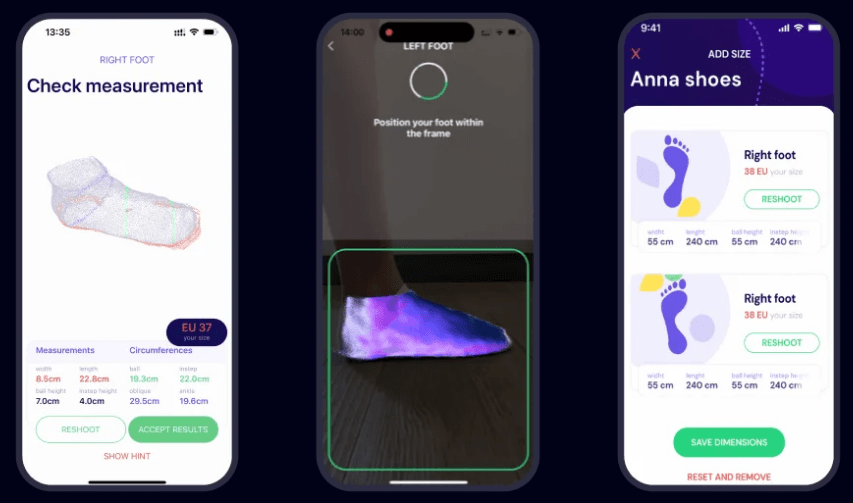AI Sizer Post-WebSummit Achievements: Progress Over the Last 4 Months
Written by
Krista Alvarez
Published on
April 16, 2024
Time reading
4 minutes

Recently, we had an interview with Viktor Shpak and Jay Donovan — the founders of VisibleMagic.
During the discussion we talked about one particular project called AiSizer. Here is an in-depth look at the challenges involved in creating it, project evolution, and future opportunities that are coming next.
Q: Why did you change the name from Sizer AR to AiSizer?
A: The decision to change the name came from the realization that the raw data from the video was too generic to deliver the relevant CX that we were trying to create with Sizer. The process required to achieve this experience proved to be much more complex than originally anticipated.
We had to make technical changes to solve this, so we took an AI-centric approach, using computer vision and 3D computer vision algorithms, similar to Google Street View, but for body measurements. Since we changed our technical approach and included these machine learning techniques, we decided to update the name to reflect this more accurate representation of the features used in the app. And so Sizer AR became AiSizer.
Q: What product developments were implemented in the past four months?
A: Originally, AiSizer relied heavily on Apple hardware to access raw cloud point data. However, with the degradation of depth cameras in recent iPhone versions, especially iPhone 14, and iPhone 15, our original approach of using Face ID for precision measurements became unfeasible.
As a result, our team had to rethink our technology to match Apple’s changing hardware focus, shifting the attention to the lighter scanners available in the iPhone Pro and iPad versions. We also redesigned the scanning process to make it more user-friendly, opting for a guided approach rather than relying solely on Face ID. These adjustments were critical to improving the overall user experience and the quality of the measurements obtained.

Q: What other enhancements have been made, besides improving the user experience?
A: Well, the primary focus has been on improving the quality of the scanning process and the resulting measurements. Previously, poor data capture led to incorrect results and significant measurement errors, requiring users to make multiple attempts to achieve accurate scans.
To address this, our development team implemented guided scanning processes to assist users in positioning their devices correctly and refining the output quality. The use of AI techniques such as segmentation and smoothing was instrumental in improving the quality and accuracy of our measurements.
Q: What challenges did you face during the project?
A: There were numerous challenges, particularly in terms of access to raw data and the hardware limitations inherent in Apple’s ecosystem. The lack of low-level API access to the hardware and limited control over the scanning process were significant problems. However, we pushed through, taking advantage of the capabilities of Apple devices while trying to get as much value out of the available data as possible.
Q: What is the view on the Vision Pro device, and do you have plans to integrate AiSizer with it?
A: The original plan was to transfer vision metrics functionality to the Vision Pro, but current API limitations have required us to review the approach. Still, we recognize the potential of Vision Pro as a companion device, particularly for facilitating complex spatial interactions and augmenting real-world experiences. We see Vision Pro as a way to improve user interactions with physical objects, bridging the gap between the digital and physical worlds. We will definitely a build Vision Pro companion app for AiSizer’s professional users, and as soon as Apple updates the AVP with the right hardware/software for scanning, we’ll be right there to make an update
Q: What’s can you tell about the experience from the work with NEC-X
A: Working with NEC-X was so great! They helped us refine our business model in many ways. Their Lean Canvas approach helped to find our early adopters and also to create realistic financial models and traction plans. That was a really great learning opportunity.
Q: What is the future of the Sizer project?
A: Right now the focus is on finishing the alpha version of AiSizer, incorporating new technologies, and refining the user experience. In addition, we’ll keep working on the companion app for Vision Pro and provide a third-party application connection, — with plans to release an updated version in the second quarter of this year. This version will be available on the App Store and will serve as a platform for e-commerce websites and other third-party applications that require body measurement capabilities. We’ll just keep pushing the envelope of possibilities as much as we can.